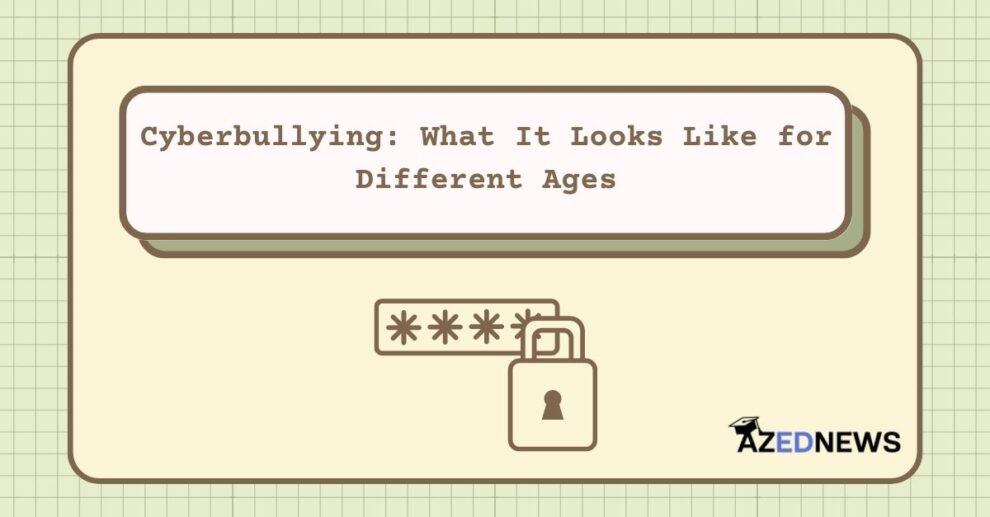Forty years ago, a child could go home from school to escape his bullies. But today, cyberbullying can occur around the clock through the use of social media, texting, videos, email and other technology.
Cyberbullying is one of the biggest issues affecting kids today. It consists of aggressive and hostile behaviors towards another person through technology.
For the child being bullied, there is no relief. That means it’s up to us as adults to take responsibility for allowing our children to use social media, monitor their interactions, discuss with them what appropriate behavior is and is not and respond when they cross those lines.
This is the second in a series on the school’s role in design and implementation of healthy school initiatives in the communities, towns and large cities across America written by Dr. WiSH – William S. Hesse, Ph.D., and co-authors Cindy Boyum, Shannon Woodruff, Mark Kesler, Jen Guerrette, Ryan Backstrom, Dr. Ann Davis, Lora Potter, Kylene Bogden, Dr. Chris Lineberry of “The Ultimate Guide to Healthy School Design and Implementation” available from Core Purpose Consulting.com.

Dr. WiSH – William S. Hesse, Ph.D., founder of Core Purpose Consulting
Children as young as seven years old are being turned loose to use technology and social media, yet they have no training to explore this environment.
The freedom of learning to drive is comparable to being turned loose into the cyber landscape.
After earning learner’s permits, teenagers had seven months to learn how to navigate driving and traffic safely under the tutelage of their watchful and knowledgeable parents and pass their driver’s test and only then were they given the freedom to drive independently and explore.
While most social media apps state the age of access is 13 years old or more, there is little to no enforcement of this. That means, youth explore uncharted waters of information, entertainment, and companionship without guidance, wisdom, integrity or compassion. Parents are unknowingly granting access to an entirely new world – one filled with invisible pitfalls, risks and poor decisions.
Before letting youth use social media, it’s important to encourage them to remember to be compassionate and responsible when interacting with people online.
In addition, take the time to talk with youth about ways to keep them safe online. That includes reminding them to:
- Never post your personal information online
- Never share your passwords
- Never add someone on your social media you do not know
- Change your password twice a year
- Check your digital footprint often
What Cyberbullying is
Cyberbullying is a repeated willful act to harass, threaten, embarrass, damage, or target another person. This act is inflicted through the use of electronic devices using an electronic platform.
Cyberbullying is:
- Repeated: The repetition of behavior, not one incident in isolation.
- Willful: The behavior is deliberate and not accidental in action.
- Damage: The targeted person perceives that damage was inflicted.
- Electronic Devices/Medium: Computers, cell phones, and other electronic devices using an electronic medium such as SMS, text, apps, social media, You Tube, forums, gaming, etc. This element is what distinguishes cyberbullying from traditional bullying.
Cyberbullying is a growing problem occurring inside and outside of the school day. Cyberbully does not discriminate; it affects children, adolescents, and adults all over the world. Cyberbully has no gender, race, geographic, cultural, or social economic boundaries.
For the first time in years, cyberbullying has surpassed bullying as the most common type of harassment that middle school and high school students experience. In fact, the Pew Research Center found that over 59% of U.S. teens have been cyberbullied or harassed online with 90% saying it was a major problem for school age kids.
Core Purpose Consulting.com video: Healthy School Guide introduction
Trends in Cyberbullying by age groups
Researchers have investigated age trends in cyberbullying and victimization across several countries and estimate that over 200 million children and youth around the world are being victimized by their peers. It is estimated that 10 -15 % of children repeatedly cyberbully others and are repeatedly cyberbullied.
The research found cyberbullying:

Dr. Ann Davis, senior education consultant
- Begins typically in the third grade using electronic methods for social exclusion – leaving kids out and knowingly hurting feelings;
- Increases between the ages of 11 and 15, which may be due to puberty, school changes, and/or development of social skills, and usually carries over from a face-to-face encounter leading to sexual harassment;
- Peaks in 9th grade with the transition from middle or elementary school to high school;
- Remains throughout high school at high levels shifting from the use of written name calling, insults, and lies to more deceptive visual acts such as sexting, videos, etc.
- Girls tend to begin using social forms of bullying at earlier ages than boys and continue longer in the cyberbullying and victimization.
Below are some examples of cyber-bullying by the ages to increase awareness.
Ages 6-9: Most children are introduced to email and shared drives in school. The intention is to foster a community of information sharing and collaboration. Oftentimes however, these young children are intrigued by the secrecy of sharing information in this new way. They can misuse the platforms by sending and sharing information and gossip about classmates. They are unaware that the actions they initiate or participate in digitally can have real life effects. They oftentimes would share information or participate in things that they wouldn’t in face-to-face interactions.
Ages 10-12: Children this age are very comfortable with technology, having used it for many years at school and home. The majority of them have their own phones and tablets, and they are experienced at sending and sharing information at lightning speed. Bullying in real life is prevalent at this age, and the digital landscape is no exception. Many children have social media accounts, Spam accounts, and access to a wide range of apps to interact with their peers. A Spam account is a secret or alternate account that they set up to have a greater range of freedom from supervision. Even if parents are being diligent, it can be very easy for a determined child to gain frightening freedom in the social media world. Spam accounts are used for gossip, roasting classmates, pursuing illicit relationships, posting unapproved pictures, etc.
Ages 13-15: Well into puberty, this age group is exploring romantic connections online. They are bombarded with highlight reels of others’ lives and face-tuned selfies. This age group is especially vulnerable to exclusion. They have an innate need to be part of a pack and their greatest fear is being left out, digitally and physically. This age group is also known for participating in trickery, which is coaxing a peer into admitting or saying something and posting for others to see. They are also very adept at hacking into each other’s phones and accounts and interacting/posting as imposters of the victim.
Ages 15-17: Having been raised in this environment for ten or more years, these teenagers are vulnerable to all of the above. Cyberstalking and harassment are prevalent in this age group. When one is scorned, they can often be the victim of heavy backlash that can include posting or sending unwanted or intimidating messages repeatedly. An escalation of this is flaming, where the same interaction is posted in forums or groups for public humiliation.
Warning signs and repercussions

Since cyberbullying involves an electronic device, investigate a child’s digital behavior to see if there any warning signs:
- Usage increase or decrease;
- Avoidance of talking about what they are doing;
- Reactions of laughter, anger, and/or upset to what is occurring on their device;
- Secretive and hides the screen or device;
- Shuts down or opens new media accounts;
- Avoids social situations – especially if enjoyed previously;
- Withdraws or loses interest in people and activities – depressed actions.
Cyberbullying is linked with several serious forms of maladjustment including psychological dysfunction, low academic performance, social difficulties, and health problems.
Related articles:
Eat your medicine: Nutrition’s impact on learning, behavior and social health
Building healthy communities: Redefining school culture
Emotional intelligence: How to express yourself responsibly
Additionally, cyberbullying victimization is related to both negative short-term and long-term effects, such as depression, anxiety, delinquency, and criminal behavior, which can carry over into adulthood.
Furthermore, research has indicated that childhood cyberbullying is linked to violence, heavy drinking and marijuana use at age 21 and later, and students involved in bullying show more impulsivity and tend to gravitate towards antisocial peers.
What should you do if you suspect cyberbullying?
Cyberbullying is a form of bullying and should be taken seriously.
Because cyberbullying happens online, consider the following actions:
- Observe – Be aware of usage, monitor time spent on device(s), and watch for warning signs;
- Talk – Learn about what is happening online and what cyberbullying means. Ask questions to learn if cyberbullying is taking place, how it started, and who is involved;
- Record – Keep a record through notes and/or screenshots of harmful posts or content if possible. The record will help document the cyberbullying for use by law enforcement and/or school officials if warranted.
- Report – Use school policies and processes of social media platforms by reporting any violations. Contact app or social media platforms to report offensive content and have it removed. Report to the police any physical threats, or if a potential crime or illegal behavior is or has occurred.
- Support – Provide positive influence through peers, mentors, and trusted adults to quickly intervene publicly where negative or hurtful content posts have been directed at a child. Offer professional support and/or counseling for the victimizes and perpetrators of cyberbully as needed.
To get help with cyberbullying:
- Contact 1-201-463-8663 or StopCyberbullying.org
- Tell a Teacher, Counselor or Principal at your school
- National Suicide Prevention Hotline at 1-800-273-TALK (8255)
Steps to prevent cyberbullying
Building a healthy school culture is your best defense against bullying of any form, including cyberbullying.
The Ultimate Guide to Healthy School Design and Implementation is the most comprehensive and virtual foundation for support and inspiration to accomplish this on the market today.
Within the Healthy School Guide, not only does the social and emotional climate module cover mindful technology, it also demonstrates how your Student Wellness Advocacy Teams (SWAT) can lead your school campus in all the main aspects of a healthy school, including cyber bullying.
You can follow one high school’s Instagram on their student led healthy culture quest at OC_SWAT.
Pick up your copy of The Ultimate Guide to Healthy School Design and Implementation at CorePurposeConsulting.com and continue to build your healthy school culture that works for your school.
As a society, it is our responsibility to encourage and expect positive digital citizenship.
The Golden Rule – to treat others as you would like to be treated – is key in this situation. Teaching young people to be compassionate and responsible is our ultimate legacy.
Resources:
1. CorePurposeConsulting.com‘s The Ultimate Guide to Healthy School and Implementation
Our MISSION at Core Purpose Consulting is to revolutionize education by shifting the focus to the Whole Child…By helping schools to achieve healthy school and community environments, movement driven learning concepts, educational equity, healthy leadership, physical education and activity programs, nutrition programs, and complete active school programming.
Our VISION… Connecting… Inspiring… Revolutionizing.
Whether you are a new healthy school, a developing healthy school or a healthy school that excels already, The Ultimate Guide to Healthy School Design and Implementation is customizable to meet your school’s needs.
If at any time you need assistance with any aspect, feel free to contact us. Our team is also available to assist with upgrade opportunities such as trainings and professional development needs specific to each module. We are happy to help make your school’s “WiSH” come true.











